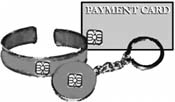From Detection to Unique Identification
| During the 1970s, industries such as manufacturing, livestock, and transportation commenced research and development projects to find ways to use IC-based RFID systems. Applications like industrial automation, animal identification, and vehicle tracking were all under consideration. During this period, IC-based tags continued to advance and featured writeable memory, faster read speeds, and longer ranges. Many of these RFID applications were based on proprietary designs and did not leverage the power of a standards-based approach. In the early 1980s, more sophisticated RFID technologies were employed in applications ranging from identification of railroad cars in the United States to tracking farm animals in Europe. RFID systems were also used in wildlife studies to tag and track exotic or endangered species such as fish with minimal intrusion into their natural habitats. In the 1990s, electronic toll collection systems gained popularity on both sides of the Atlantic, with commercial implementations in Italy, France, Spain, Portugal, Norway, and in the United States in Dallas, New York, and New Jersey. These systems offered a more sophisticated form of access control because they also included a payment mechanism. Starting in 1990, several regional toll agencies in the northeastern United States joined forces under the name of E-ZPass Interagency Group (IAG), and together they developed a regionally compatible electronic toll collection system. This step was a major milestone toward creating application-level standards for interoperability. Until this point, most standardization efforts were centered on technical attributes such as frequency of operation and hardware communication protocols. E-ZPass enabled a single tag to correspond to a single billing account per vehicle. The tagged vehicle then had access to highways of multiple toll authorities without having to stop at a tollbooth. E-Z Pass helped traffic to flow more easily and dramatically reduced the labor involved in collecting tolls and handling cash. Around the same time, RFID card keys became increasingly popular as a replacement for traditional access control mechanisms such as metallic keys and combination locks. These so-called contactless smart cards provided information about the user and thus offered a more personalized method of access control, while being inexpensive to produce and program. Table 2.1 compares the most common methods of access control with that of RFID access control.
RFID access control has continued to gain new levels of acceptance. Automobile manufacturers have been using RFID tags for nearly a decade to control the ignition systems in their vehicles, resulting in dramatic reductions in car theft. Most recently, some automakers have equipped their vehicles with RFID systems that directly control entry into the passenger compartment and the trunk. Figure 2.3. Milestones from the 1960s to the 1990s |
EAN: 2147483647
Pages: 112





